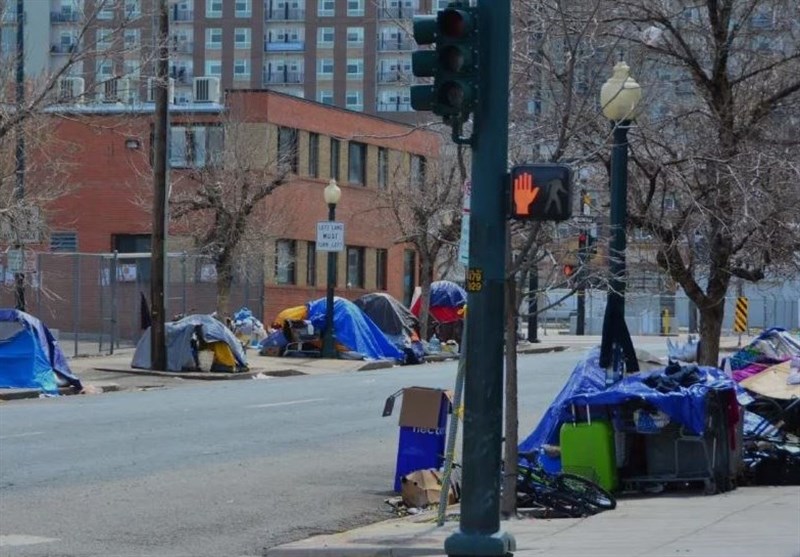Homelessness Growing Worse in US Due to Pandemic
TEHRAN (Tasnim) – With as many as 23 million American renters facing eviction, homelessness will likely grow worse, According to the Nation.
The novel SARS-CoV-2 has roared through the American landscape leaving physical, emotional, and economic devastation in its wake. By early July, known infections in this country exceeded three million, while deaths topped 135,000. Home to just over 4% of the global population, the United States accounts for more than a quarter of all fatalities from Covid-19, the disease produced by the coronavirus. Amid a recent surge of infections, especially across the Sun Belt, which Vice President Mike Pence typically denied was even occurring, the Centers for Disease Control and Prevention (CDC) reported that the daily total of infections had reached a record 60,000. Arizona’s seven-day average alone approached that of the European Union, which has 60 times as many people.
Making matters much worse, the pandemic erupted during the presidency of Donald J. Trump, whose stratospheric self-absorption, ineptitude, denial of science, and callousness have reached heights even his most ferocious critics couldn’t have imagined. His nostrums, including disinfectant, sunlight, and hydroxychloroquine, could be dismissed as comical if they weren’t downright dangerous, encouraging possibly fatal experimentation, while breeding false hopes.
Public health safeguards that should have been initiated early on were neglected, above all testing and contact tracing. At the end of April, when President Trump first crowed that “we are the best in the world in testing,” the United States ranked 22nd in tests per 1,000 people in the 36-member Organization for Economic Cooperation and Development, the club of the globe’s wealthy states. Although testing nationwide had increased from 250,000 a day in early May to a current 571,574, that’s still less than half the number needed to begin to lock down the virus.
National economic statistics help highlight Covid-19’s uneven effects. Thirty-nine percent of those who have lost their jobs since March made less than $40,000 a year, compared to 19 percent of those earning $100,000 or more.
The CDC reports that 80 percent of those who died from Covid-19 in the United States were 65 or older. The disease has particularly ravaged the elderly in nursing homes (as well as the personnel staffing them), accounting for about 43 percent of countrywide deaths attributable to the virus.
Among those especially hard-pressed to avoid infection and death are people who sleep in shelters, on the street, in deserted buildings, in subway cars, or—and they are perhaps the “lucky” ones—in their own cars. The homeless don’t get all that much Covid-19-related media coverage, in part because they are a sliver of the population (0.2 percent) and so lack a significant political voice: You won’t find pricey lobbyists working for them in Washington. They can’t even take that most basic precaution advised by medical experts, sheltering in place. To do that, you need dependable shelter, which the homeless, by definition, lack.
Though homelessness exists in every state, as well as in suburbs and rural areas, spatially it’s highly concentrated—and that concentration is racial, not just spatial. Whites comprise 76 percent of the American population, but only 49 percent of its homeless. For African Americans, the corresponding figures are 13 percent and 40 percent, for Hispanic-Latinx Americans 18 percent and 21 percent. Native Americans and Native Alaskans, a mere 1.2 percent of the population, make up nearly 9 percent of all homeless people. The homelessness rate is similarly skewed: 66.7 per 10,000 for Native Americans and Native Alaskans, 55 for African Americans, 21.7 for Hispanic/Latinx, 11.5 for whites, and 4 for Asian Americans.





